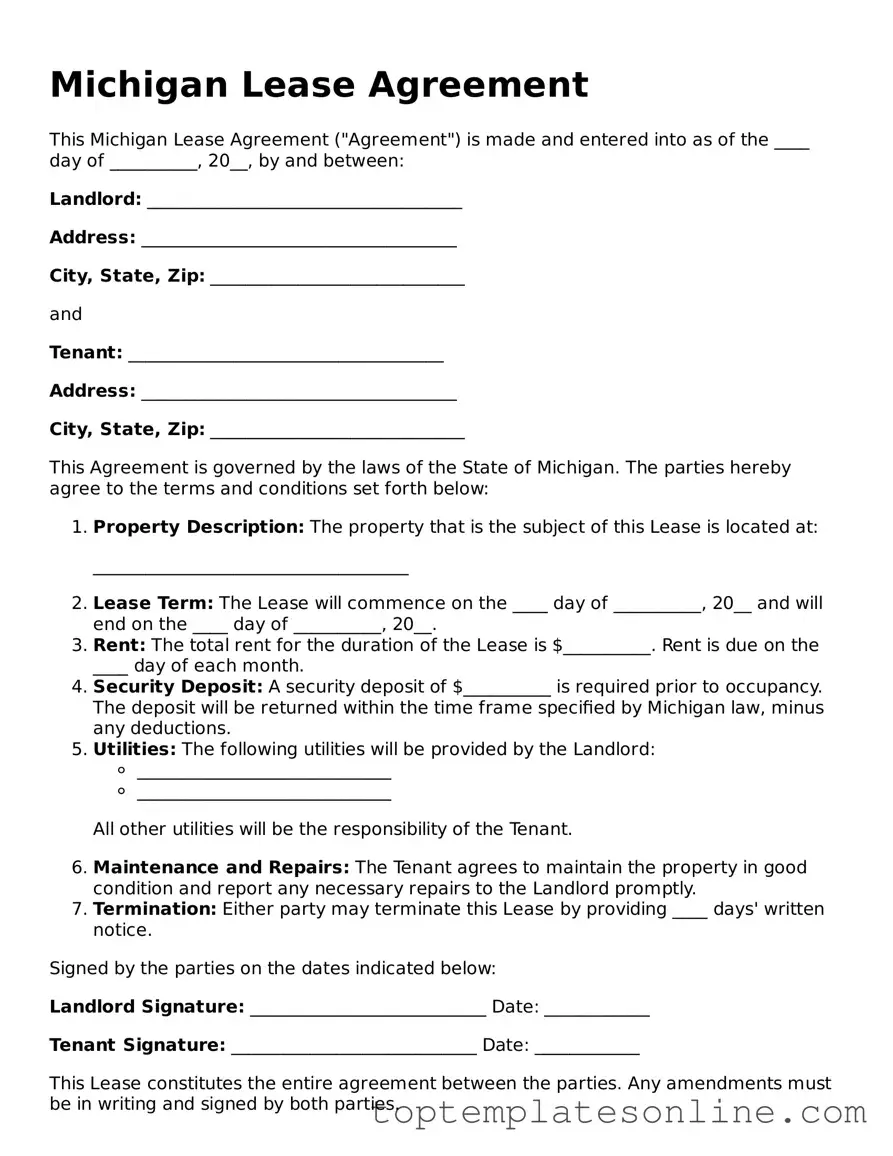Blank Lease Agreement Template for Michigan State
A Michigan Lease Agreement form is a legal document that outlines the terms and conditions between a landlord and a tenant for renting a residential property. This form serves as a crucial tool to protect the rights of both parties, ensuring clarity and understanding in the rental relationship. By detailing important aspects such as rent amount, lease duration, and responsibilities, it helps prevent disputes and fosters a positive living experience.
Customize Lease Agreement Here
